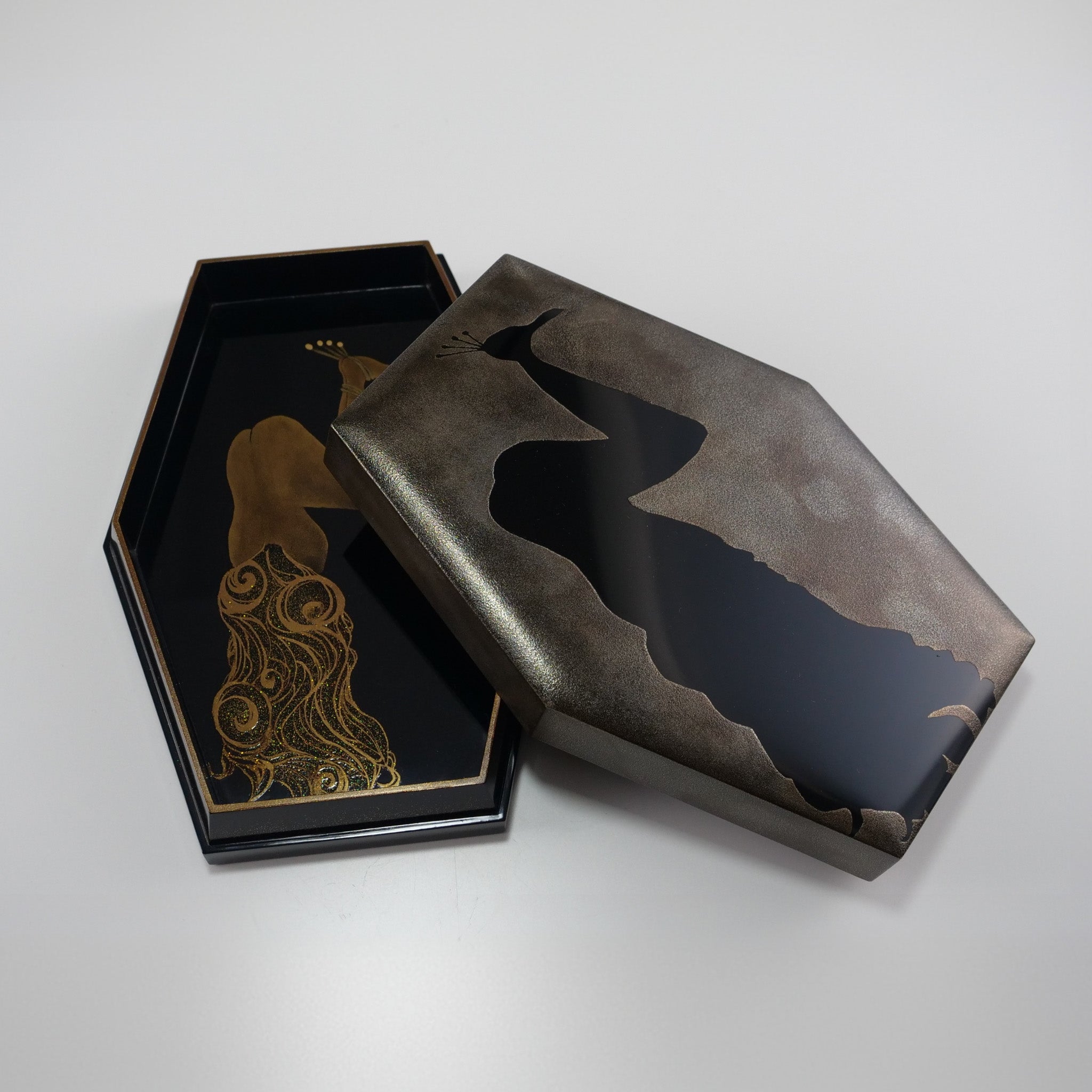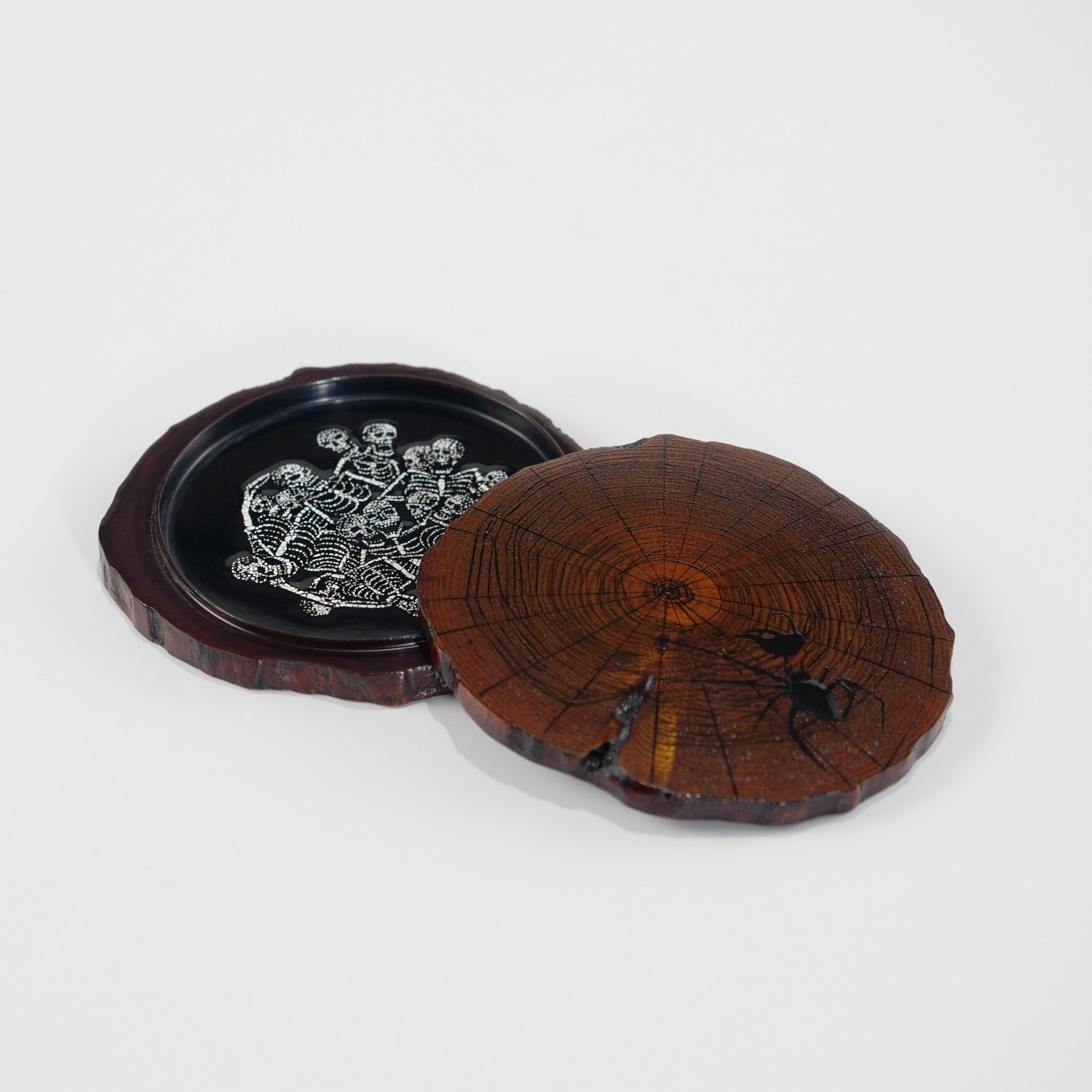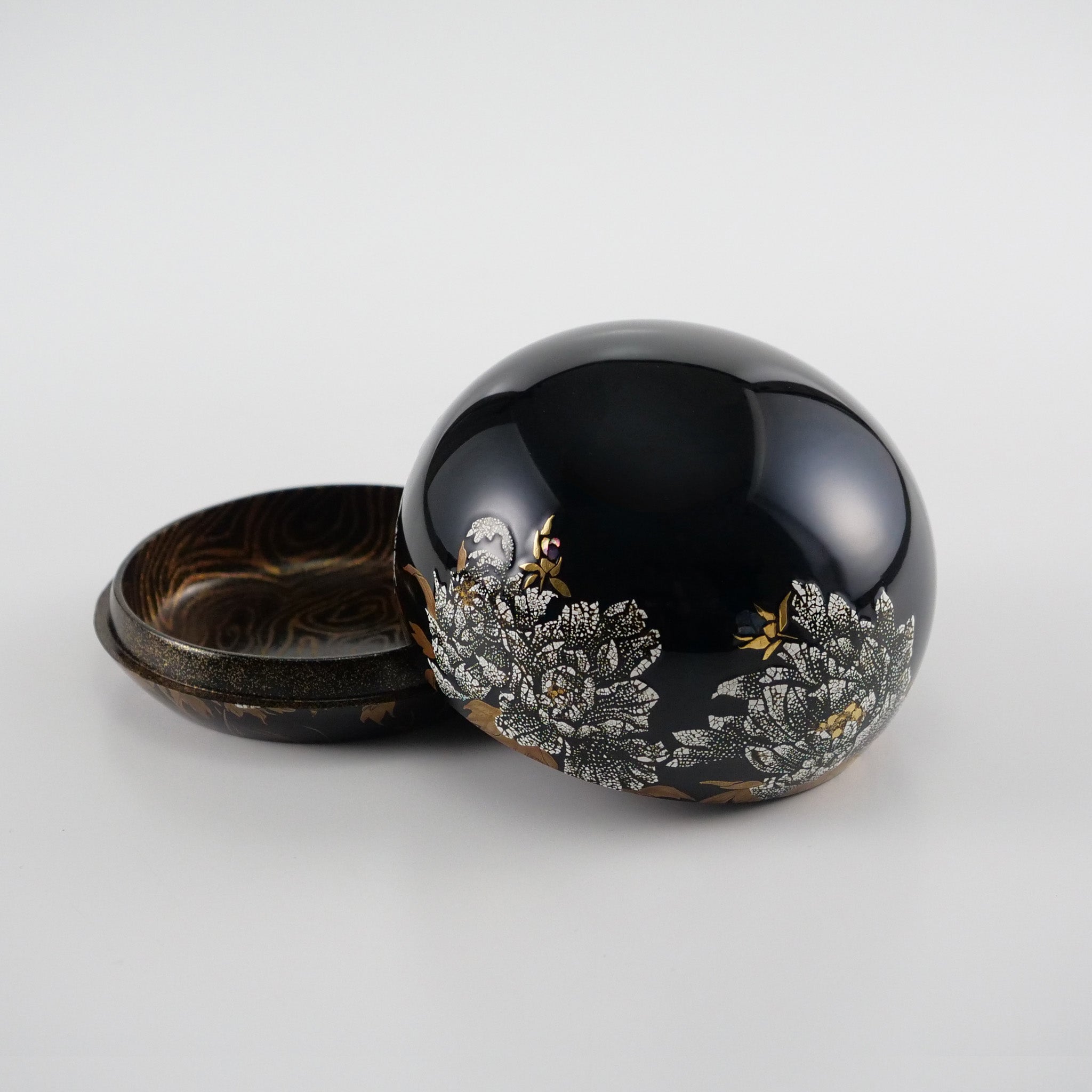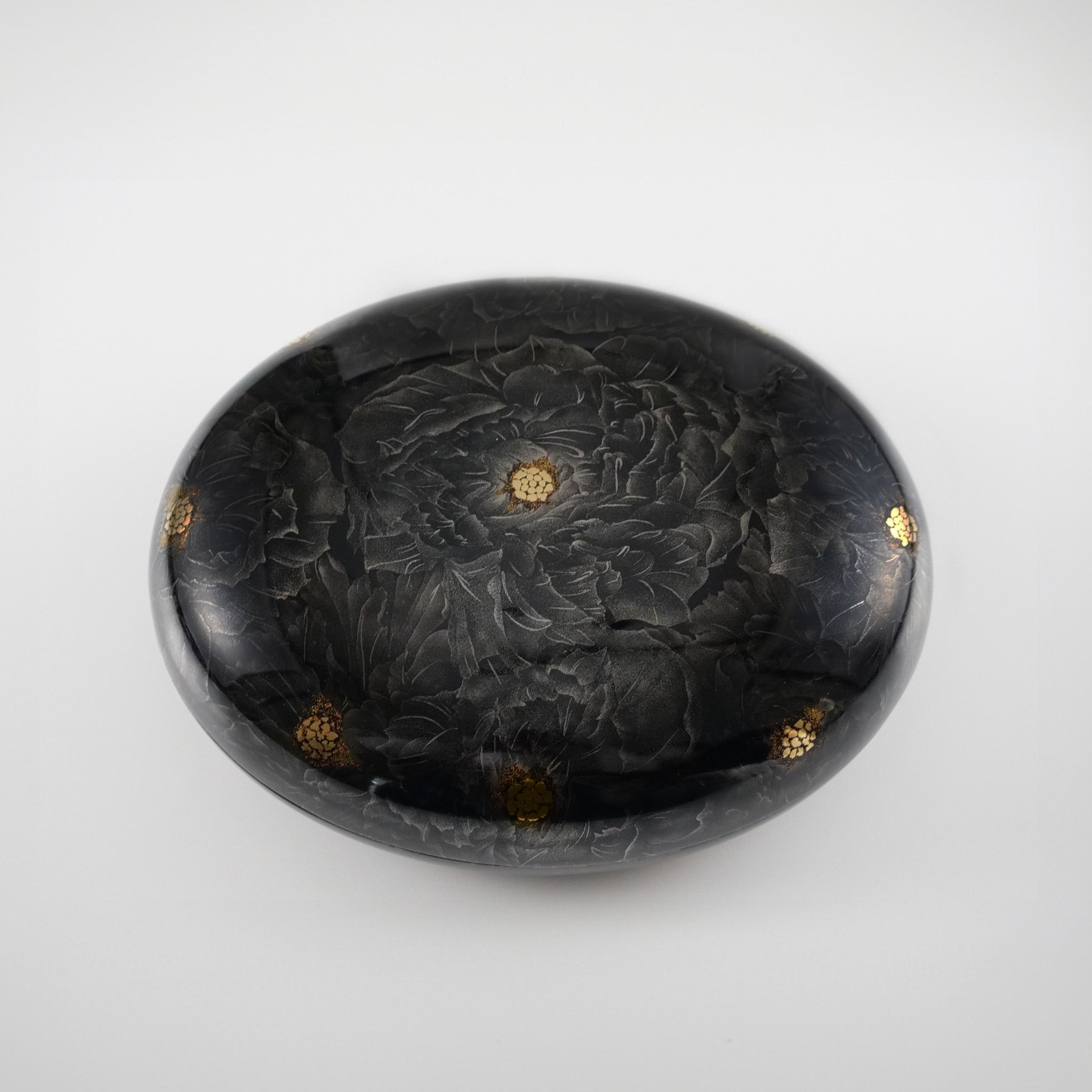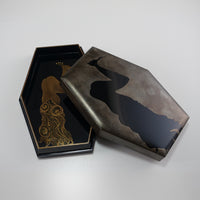
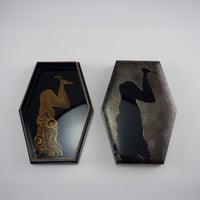
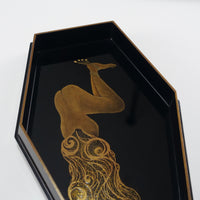

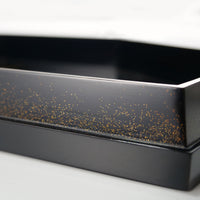
Product Information
In 'In Praise of Shadows,' the most beautiful depiction of lacquer is the luxurious and resplendent beauty hidden in darkness. It is a subdued glow under the light of a candle. However, we now live in an era of electricity, and it is true that there are fewer environments where physical darkness can conceal such beauty. To express the beauty of lacquer as described in 'In Praise of Shadows,' I would like to explore the possibilities of incorporating shadow puppet motifs, which consider the potential of being hidden in darkness.
Message
The lid of the author's box is shaped like a shadow, while the contents of the box are depicted using the maki-e technique to represent the body, matching the shadow's design. During Japan's Edo period, there was a genre of play art known as 'asobi-e.' This included hand shadow puppetry and body shadows used as entertainment at banquets or children's games. Additionally, there were cut-out shadow puppets, rotating lanterns, pictures attached to paper lanterns, and even ukiyo-e prints that enjoyed the unexpected interplay between substance and surprise, such as portraits depicting actors' shadows on shoji screens.
2019
Kanazawa
Hinoki (Japanese cypress), hemp cloth, gold, silver, lacquer, and maki-e (lacquer decoration technique).







